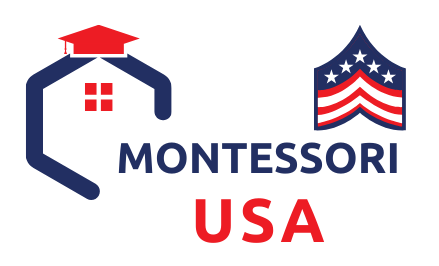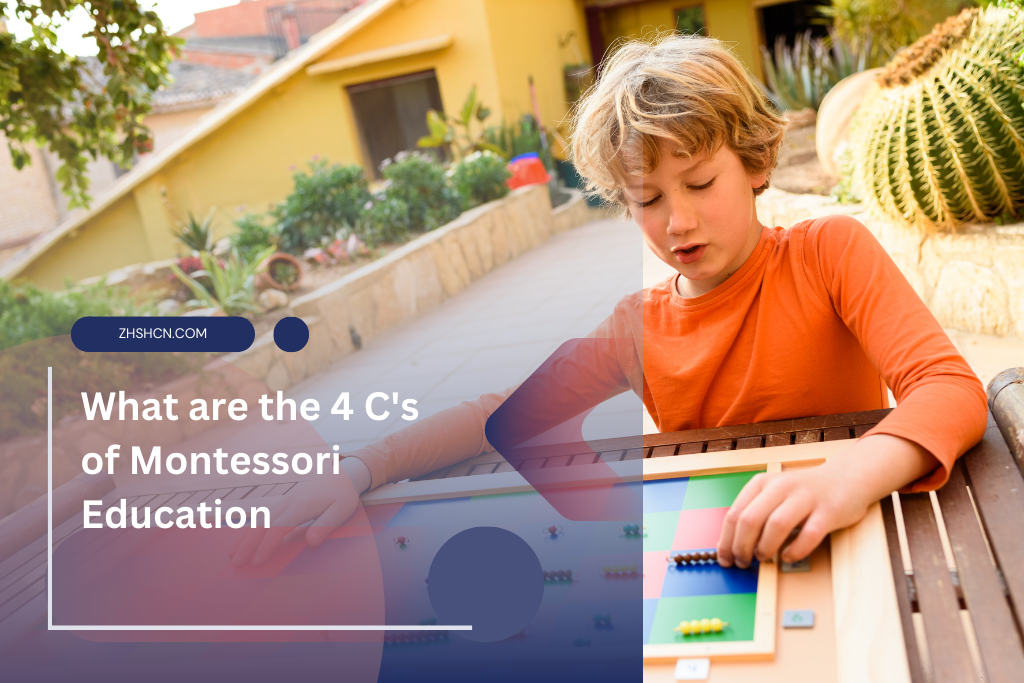Montessori education, a brainchild of Dr. Maria Montessori, has been a beacon of transformative education for over a century. By emphasizing a child-centric approach, it fosters a nurturing environment for independent learning, critical thinking, creativity, and collaboration – famously known as the 4 C’s of Montessori Education.
Key Takeaways
- Emphasis on Critical Thinking, Collaboration, Creativity, and Communication (4 C’s).
- Promotes child-centric learning in a carefully prepared environment.
- Montessori education has been integrating the 4 C’s into early childhood education for over 100 years.
- Comparison between Montessori and Traditional education methods highlights the Montessori approach’s benefits.

Understanding the 4 C’s of Montessori Education
The 4 C’s stand as the pillars of Montessori Education, aiding in the holistic development of a child.
Critical Thinking
Critical thinking in Montessori education is fostered through hands-on learning experiences. Children are encouraged to explore, ask questions, and make discoveries independently, instilling a deeper understanding and a lifelong love for learning.
Collaboration
Children in Montessori settings learn to collaborate with peers, share ideas, and work together on projects. This fosters social skills, teamwork, and a sense of community.
Creativity
Creativity is nurtured by providing children with a stimulating environment filled with resources that inspire innovation and imaginative play.
Communication
Effective communication is key in Montessori classrooms. Children are taught to express their ideas clearly, listen, and respond respectfully and constructively to others.
Montessori vs Traditional Education
A comparative analysis between Montessori and traditional education methods reveals the merits of the Montessori approach. In traditional settings, the emphasis is often on rote memorization, while Montessori education encourages a deeper understanding through exploration and discovery.
Montessori Tools and Resources
Montessori education is rich in tools and resources that facilitate hands-on learning. Some notable Montessori materials include the Moveable Alphabet, Pink Tower, and Montessori beads. These materials are meticulously designed to engage children in active learning experiences, promoting self-directed learning and mastery of concepts at their own pace.
The Global Impact of Montessori Education
Montessori education has transcended global borders, with over 15,000 Montessori schools worldwide. The method has significantly impacted the educational landscape, preparing children for school and life. The Montessori approach has been hailed for its ability to nurture children’s innate curiosity and love for learning, equipping them with the necessary skills and values for a fulfilling life.
Deep Dive into the 4 C’s
Montessori education uniquely nurtures the 4 Cs: Communication, collaboration, critical thinking, and creativity. These core principles form the bedrock of Montessori pedagogy, aiming to prepare children for school and life. Let’s take a closer look at each of these principles.
Communication
In Montessori classrooms, communication is fostered through a conducive environment where children feel safe and encouraged to express their thoughts and ideas.
- Open Conversations: Teachers engage students in open conversations rather than one-way communication.
- Peer Interaction: Children are encouraged to communicate with peers, fostering social skills and a sense of community.
Collaboration
Collaboration is a natural outcome in Montessori settings, thanks to the mixed-age classrooms and emphasis on group projects.
- Mixed-age Classrooms: Older children often help younger ones, promoting teamwork and mutual respect.
- Group Projects: Through group projects, children learn the importance of working together to achieve common goals.
Critical Thinking
Montessori education encourages critical thinking by allowing children to explore and discover independently.
- Hands-on Learning: Through hands-on learning experiences, children develop problem-solving skills and the ability to think critically.
- Self-directed Activities: Children choose their activities, fostering decision-making skills and independence.
Creativity
Creativity is nurtured by providing a stimulating environment filled with resources that ignite curiosity and imagination.
- Resource-rich Environment: Montessori classrooms have many materials that stimulate creative thinking.
- Freedom of Expression: Children are encouraged to express themselves creatively through various mediums.
FAQs
What is the main goal of Montessori education?
The main goal is to foster a love for learning and to nurture a child’s natural curiosity and desire to explore.
How does Montessori education differ from traditional education?
Montessori education emphasizes self-directed learning, while traditional education often focuses on rote memorization.
What ages is Montessori education suitable for?
It’s suitable for children from infancy through high school.
Relevant Links:
- Montessori and The Four C’s of Success3
- Montessori, An Education for the 21st Century and Beyond4
- Montessori Basics5

